- Getting around Lijiang. Dont stay in the Old Towns more than 2 days, there is nothing to do. KRISS Oct 9, 2013 05:46
- 2013 Beijing Temple Fair BENNYLAU Feb 26, 2013 03:29
- Malaysian traveling from KUL - LAX vis Shanghai PVG ZATI_DY Jan 3, 2013 20:15
Kaiping Castles
- Views: 6385
- |Vote: 1 0
- |Add to Favorites
- |Recommend to Friends
‘A mans home is his castle!’ This popular expression dates back centuries to an era when those who could afford to, built themselves strongholds to protect both life and property. Castles of all shapes and sizes can be found around the world. In a country renowned for its walled cities it comes as no surprise to find a variety of defensive ‘castles’ suitable for protecting a family or even a small village against attack form without. Like any other castle, the walls are thick, made of stone, bricks or cement with few or no openings to allow in the light besides a single and well fortified front door.
It takes a few minutes for my eyes to adjust in the dimly lit interior. We have stepped over the threshold into the past that is both old and new. Our host welcomes us warmly as he stands on the threshold of his castle, a home that has been in his family for several generations. This unusual residence was built by his grandfather and when our eyes have adjusted to the dim light he proudly presents an old photograph of his male family members. He points out his father, aged sixteen and smartly dressed in western clothing standing in the back row. His grandfather and the family patriarch who are dressed in full length traditional gowns and caps are seated in the front row.
Despite listening carefully, I only pick up snippets of his family story. Around the walls are more framed black and white photographs of the family. The room is furnished with stately period pieces that his grandfather no doubt commissioned for his new home so many years ago. Rays of light stream through narrow slits high in the walls. On the beautifully carved table in the centre of the room lies a large book containing glossy photographs of many of these historic castles. Against the back wall stands an ornately carved side table. The flagstones on the floor are large, smooth and well worn, their soft grey colour adding to the sombre tones of the reception room.
The Rui Shi Lou 瑞石楼, built in 1923 by a local man who was also a Hong Kong merchant, is one of thousands of private castles or defensive towers in Kaiping开平 Guangdong Province. Rui Shi Lou which means Auspicious Stone, can only be reached by walking or taking a motorbike from Xiangang 现冈 to the village of Jinjiang Li which contains three well preserved Diao Lou of which this is the largest and only one currently open to the public. The views from this nine story tower are commanding, giving a bird’s eye view of the village and surrounding farmlands, streams and nearby woods. Next door and slightly overshadowed is the smaller Shengfeng Lou.
The houses of Jinjiangli, like most other villages, are laid out in a neat grid with narrow flagged lanes crossing each other. Each multi-story house is contained within a private courtyard with only one entrance. High grassed levee banks surround the village, a reminder that the flat delta land ideal for growing rice is riddled with waterways that overflow their banks during heavy rains and flooding. For a little extra adventure why not follow the raised paths that wind through rice fields from village to village. It’s impossible to get lost and you’re sure to find your way back to town sooner or later.
Xiangang is surrounded by neat and tiny villages each containing at least one if not several Diao Lou. Zhong Jiang Lou中降楼 is just one of several plainer looking towers scattered around the outskirts of Xiangang where motorbikes can be hired to visit the surrounding villages. Each Diao Lou is unique and vary remarkably in size and style. The oldest known Diao Lou still standing is believed to have been built in 1436 is Yinglong Lou in San Men Li.
A bike ride away from Xiangang in Nanxing village is Bianchouzhu Lou, the aptly named ‘Leaning Tower’ of Kaiping constructed in 1903. This hapless seven story tower which began leaning before it was even completed stands alone and almost deserted guarding the surrounding duck ponds near the roadside brick kilns. Despite this obvious flaw, it and 1833 other Diao Lou have survived countless earthquakes, typhoons and floods.
Having chosen to make a self guided visit to Kaiping, we are well prepared with information about the villages and local transport but being in the tropics we could have no control over the weather. As luck would have it, the day dawned overcast but we do not let the prospect of rain dampen our enthusiasm to explore the villages of Kaiping County. Kaiping is no sleepy little town and by the time we arrived from Guangzhou on the previous evening, all the better priced bargain hotels are full so we opt for a quiet room at the back of an older hotel behind the bus station. Kaiping is on the Tan River one of the Pearls larger tributaries and we stroll along the boardwalk in search of the Ship of the Century, a waterside restaurant that promises a delicious western style meal and a cup of coffee while enjoying the views.
Between Kaiping and Xiangang are several major clusters of interesting Diao Lou open to the public which can all be reached by local buses which depart form either of the two stations that we found in Kaiping. The bus to Xiangang departs regularly from the bus station near the river and takes about 40 minutes passing through Chi Kan 赤坎 which is worth a wander through if time permits. Once off the bus in Xiangang we get distracted by the first Diao Lou we see, Zhong Jiang Lou中降楼 and spend some time wandering through a group of old but plain looking towers before going in search of a man with a motorbike to take us out to the villages.
These are easily found but bargain hard for a good deal to visit Ruishi Lou and the Leaning Tower. Dodging showers we manage to stay dry and return to Xiangang for lunch. It rains while we eat and the temperature also drops as it continues to pour. We huddle under umbrellas while waiting for the bus back to Kaiping. Just beyond Chi Kan we change buses and head out towards Ma Gang马冈 in search of Zi Li village 自力 村which contains the largest cluster of 15 castles. The road is a river of mud and we bounce along for some distance before being dropped by the side of the road.
It’s a further kilometre walk from the road along a Eucalyptus lined country lane through forest and eventually the rice paddies that surround the villages. Through the trees on the right appears a tower. Farmers, both men and women, ankle deep in water are busy planting out the bright green baby rice shoots for the next season’s harvest. Like a mosaic of mirrors the rice paddies reflex the dull grey sky overhead as a light drizzle mists the air. On our left a family trails off across the paddocks towards an ancestral grave mound to leave memorials and offerings to their ancestors. Tour buses whiz past, a sure sign that this is no longer a quiet village and a far more commercial enterprise than where we had expected.
Wherever we look, more diao lou stand taller than the surrounding buildings. The three kinds of diaolou - genglou, zhonglou and zhulou - found in the region all served the same purpose: defence and protection from the many hostile elements and inclement weather. The genglou was a plain and sturdy tower built near a village with communal funding to provide defence for the entire village. Each contributing family was entitled to a room in times of trouble. At the other extreme, the zhulou was indeed a man’s castle built on his country estate. The zhulou were tall and spacious with comfortable living quarters, tastefully decorated with nothing but the best from home and abroad.
An estimated 3,000 of these defensive towers were built across the flood plains of the Pearl River Delta. The majority of the surviving Diao Lou were constructed of that once rare and exotic medium, concrete. Most are ornately decorated in a mixture of European styles introduced by wealthy Chinese returned from making their fortunes in China’s treaty ports or even further a field. Those of an earlier vintage built of brick or stone were more than likely dismantled to provide superior building materials for newer projects.
Nearby is the pretty Li Garden created by Xie Weili in 1936, a Chinese emigrant to the United States. It’s a relaxing blend of oriental and western style gardens, a showcase of rare and exotic plants amidst artificial lakes, streams and bridges, pavilions and pergolas. Return to Kaiping via Tang Kou 糖口and San Men Li 三门里 and explore more of the 1833 remaining castles towering above the flat plains of the Pearl River delta country from Guangzhou to Zhuhai.
Getting there and about: Buses from Guangzhou, Zhuhai, Jiangmen, Zhoaxing, Zhongshan and many other cities. Hire a taxi or mini bus or take local buses, minivans and motorbikes.
Accommodation: All price ranges within easy walk of bus station
Places to eat: Ship of the Century, Shiji Zhi Zhou Canting at 80 Yan Jiang Xi Lu and Macdonalds for breakfast.
Entrance Fees: Rui Shi Lou Y20 Zi Li Cun Y50
Tips: Remember the local language is Guangdonghua so expect a little difficulty in some of the villages. No shops or restaurants in small villages so take some snacks if you plan of walking.
Remember much of the region is now Heritage Listed and a google search before visiting will result in lots of good information to help you explore this interesting area.



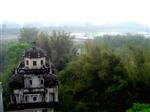
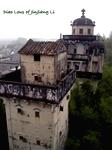
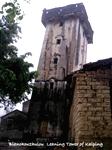
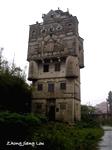
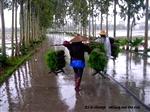
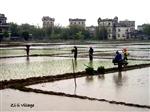

 Copyright © 1998-2025 All rights reserved.
Copyright © 1998-2025 All rights reserved.
1.
Dec 7, 2008 03:06 Reply
JSUMMERS83 said:
Great review, Jabarootoo!
This is my first introduction to castles in China - I never knew they existed. My wife and I are hoping to make it down to Guangzhou this year and might try to make a stop there.